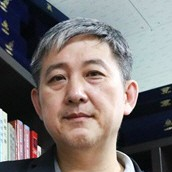Advanced or Conventional Materials as Sorbent Ⅱ
A special issue of Applied Sciences (ISSN 2076-3417). This special issue belongs to the section "Environmental Sciences".
Deadline for manuscript submissions: closed (30 April 2021) | Viewed by 16923
Special Issue Editor
Interests: environmental & biomedical monitoring; air quality & environmental engineering; material engineering; coordination polymers; metal-organic frameworks (MOFs)
Special Issues, Collections and Topics in MDPI journals
Special Issue Information
Dear Colleagues,
Following the successful launch of our first Special Issue on “Advanced or Conventional Materials as Sorbent", I am announcing the second Special Issue on this attractive area of research "Advanced or Conventional Materials as Sorbent II". This Special Issue will continue to cover all the important research efforts made in the separation and/or removal of pollutants in water or air and various approaches developed based on adsorption theory and principles. To apply the sorption technique with enhanced efficiency, numerous advanced functional materials have been developed along with efforts to improve conventional materials with various modification techniques. In this Special Issue, authors are invited to describe various aspects of sorption-related issues with respect to material chemistry/engineering, environmental/energy fields, and many other associated fields that employ sorbent materials and techniques.
Prof. Dr. Ki-Hyun Kim
Guest Editor
Manuscript Submission Information
Manuscripts should be submitted online at www.mdpi.com by registering and logging in to this website. Once you are registered, click here to go to the submission form. Manuscripts can be submitted until the deadline. All submissions that pass pre-check are peer-reviewed. Accepted papers will be published continuously in the journal (as soon as accepted) and will be listed together on the special issue website. Research articles, review articles as well as short communications are invited. For planned papers, a title and short abstract (about 100 words) can be sent to the Editorial Office for announcement on this website.
Submitted manuscripts should not have been published previously, nor be under consideration for publication elsewhere (except conference proceedings papers). All manuscripts are thoroughly refereed through a single-blind peer-review process. A guide for authors and other relevant information for submission of manuscripts is available on the Instructions for Authors page. Applied Sciences is an international peer-reviewed open access semimonthly journal published by MDPI.
Please visit the Instructions for Authors page before submitting a manuscript. The Article Processing Charge (APC) for publication in this open access journal is 2400 CHF (Swiss Francs). Submitted papers should be well formatted and use good English. Authors may use MDPI's English editing service prior to publication or during author revisions.
Keywords
- novel/functional materials
- adsorption
- removal
- pollutants
- environment
- energy





